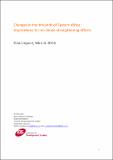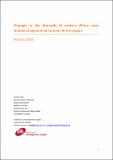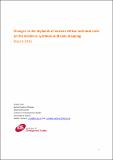| dc.contributor.author | Lind, Jeremy | |
| dc.contributor.author | Sabates-Wheeler, Rachel | |
| dc.contributor.author | Kohnstamm, Sarah | |
| dc.contributor.author | Caravani, Matteo | |
| dc.contributor.author | Eid, Abdurehman | |
| dc.contributor.author | Manzolillo Nightingale, Deborah | |
| dc.contributor.author | Oringa, Christopher | |
| dc.coverage.spatial | Eastern Africa | en |
| dc.date.accessioned | 2016-07-08T14:54:15Z | |
| dc.date.available | 2016-07-08T14:54:15Z | |
| dc.date.issued | 2016-03 | |
| dc.identifier.citation | Lind, J. et al., (2016) Changes in the drylands of Eastern Africa: implications for resilience-strengthening efforts [Data set]. Brighton: Institute of Development Studies | en |
| dc.identifier.uri | https://opendocs.ids.ac.uk/opendocs/handle/20.500.12413/12082 | |
| dc.description | Includes Final report, March 2016 | |
| dc.description.abstract | Changes in the drylands of eastern Africa
These reports detail evidence and data of long-term changes in the drylands of eastern Africa and the implications of these for efforts to strengthen resilience within pastoral systems. The region covered includes Ethiopia, South Sudan, Uganda, Kenya, and Somalia. The reports were prepared for a study commissioned by the DFID East Africa Research Hub, and its aims were three-fold:
1. To synthesise evidence across scholarly and available materials on poverty, vulnerability, livelihoods and change in eastern Africa’s drylands;
2. To catalogue national and sub-national datasets on poverty, vulnerability, livelihoods and resilience; and
3. To identify and report on priority, long-term evidence-gaps as well as recommendations on future research and data collection.
Led by Dr. Jeremy Lind and Professor Rachel Sabates-Wheeler, the studies are based on a review of over 400 scholarly and grey literature reports, as well as assessment of over 100 data-sets from the region.
The main report details the overall findings of the evidence synthesis and mapping of data-sets.
A technical note provides in-depth findings of the evidence synthesis and data mapping exercise as well as the methodology that was used. The technical note can be read alongside a catalogue of the evidence that was reviewed and data-sets.
A case study report assesses evidence and data of long-term change in five pastoral systems in the region: the Somali zone of Ethiopia, the Borana Plateau in southern Ethiopia, the South Rift Valley in Kenya, the Karamoja region of Uganda, and Bahr al Ghazal in South Sudan. | en |
| dc.description.sponsorship | Dfid | en |
| dc.language.iso | en | en |
| dc.publisher | IDS | en |
| dc.rights.uri | http://www.ids.ac.uk/files/dmfile/IDSOpenDocsStandardTermsOfUse.pdf | en |
| dc.subject | Environment | en |
| dc.subject | Poverty | en |
| dc.subject | Security and Conflict | en |
| dc.subject | Social Protection | en |
| dc.title | Changes in the drylands of Eastern Africa: implications for resilience-strengthening efforts | en |
| dc.title.alternative | Changes in the drylands of Eastern Africa: a review of evidence and data and their implications for efforts to strengthening resilience | en |
| dc.type | Data set | en |
| dc.type | Other | en |
| dc.rights.holder | IDS | en |
| dc.identifier.externaluri | http://r4d.dfid.gov.uk/Output/213033/ | en |



